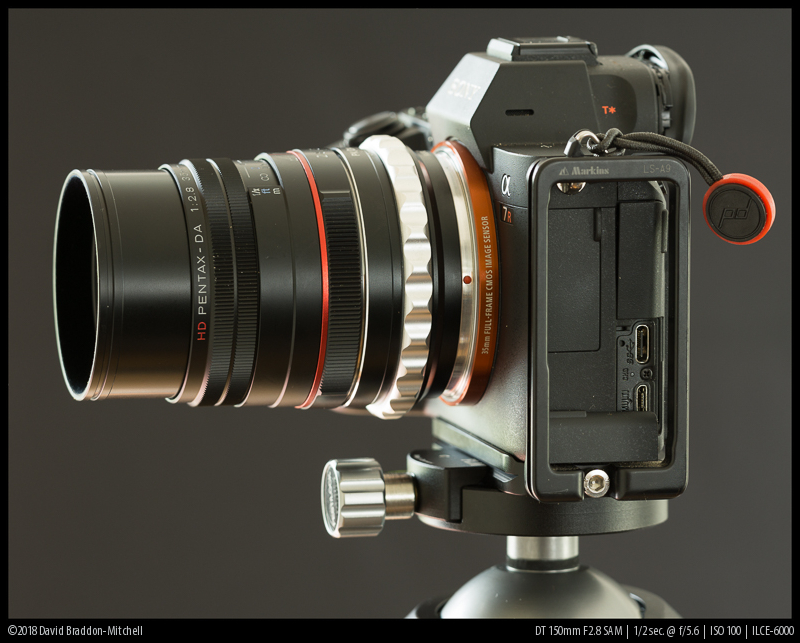
Some time ago Bastian reviewed the Tokina 35mm f2.8 macro. The lens I am talking about today is a significantly upgraded version of the same optical design, in Pentax mount. This is just a quick review, in which I mainly confine myself to how it’s improved over the lens Bastian reviewed.
The lens is, in theory, a standard macro lens for APSC cameras. Bastian reviewed it because , although there is vignetting at infinity (though correctable), it actually covers the full frame with good performance at close distances. At infinity it’s not really usable without a little cropping (you don’t need to go nearly as far as APS though). At close non-macro distances there’s a bit of easily corrected vignetting (but about 3 stops in the extreme corners). At actual macro distances it performs just fine.
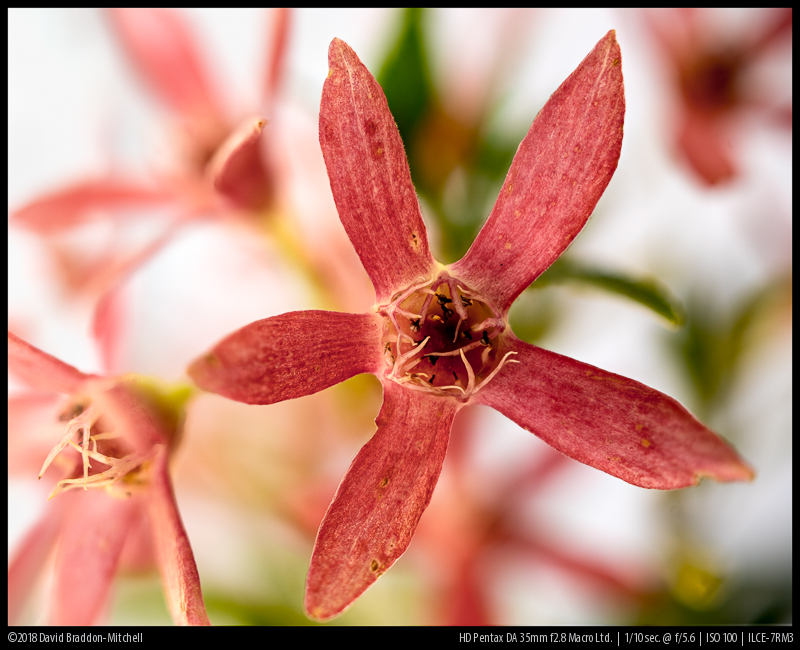
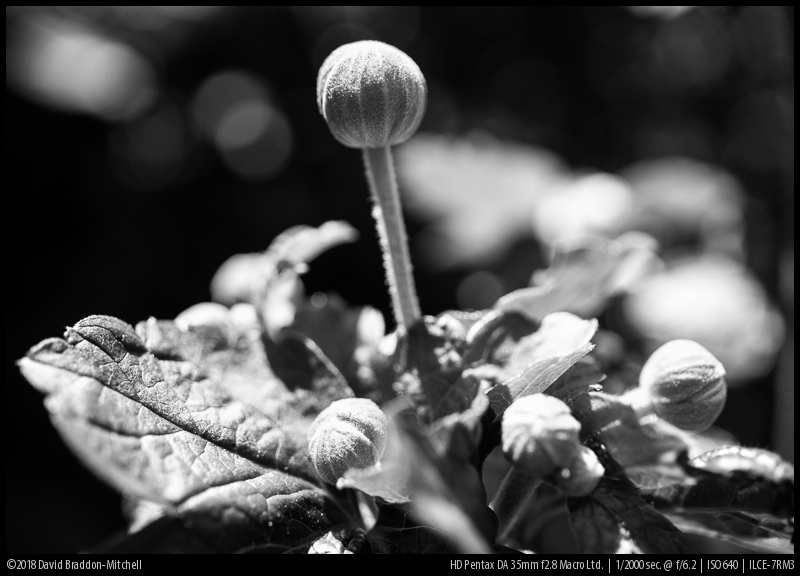
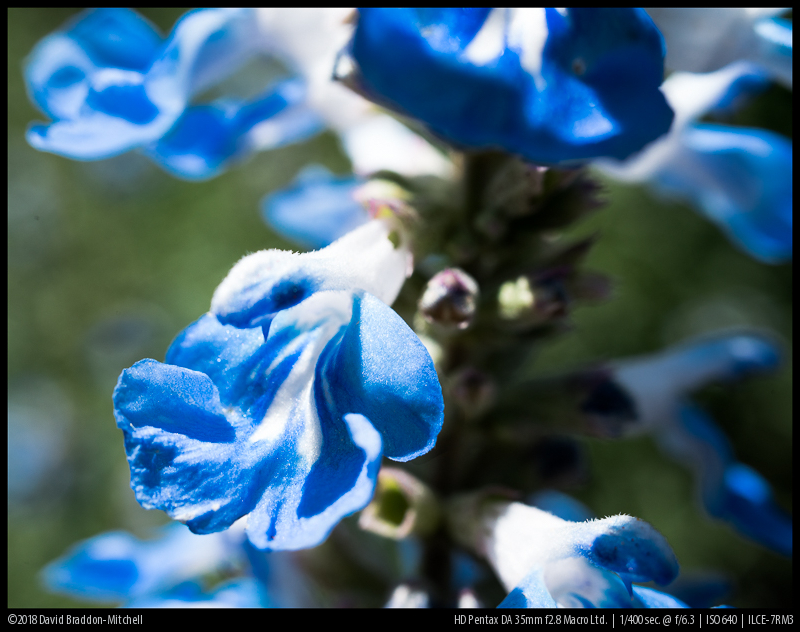
What’s important about this is that there are no 35mm full frame macro lenses on the market. The fact that the working distance on a moderate wide is quite short makes them unpopular for things like insects and so on. But of course the wide angle perspective is sometimes desirable in a macro: you get more of a sense of the other little things around your subject, and more of a ‘dynamic’ image with a less flattened perspective. They are, for example, very useful tools in a botanical photographer’s kit.
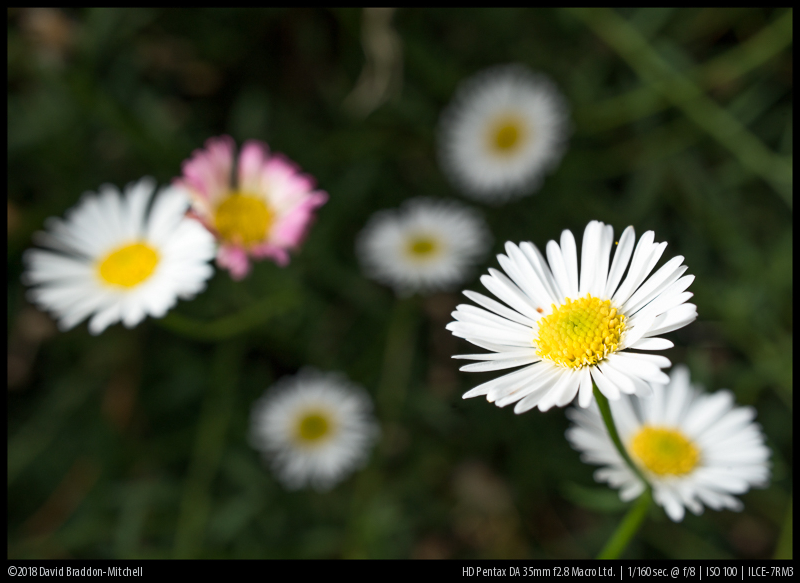
Specifications
-
- Diameter: 49.5 mm
- Field of view: 63° (diagonally, on fullframe)
- Length: 63 mm
- Weight: 214g (without adapter)
- Filter Diameter: 49 mm
- Number of Aperture Blades: 9 (strongly rounded)
- Elements/Groups: 9/8
- Close Focusing Distance: 0.139 m (measured from sensor)
- Maximum Magnification: 1:1
- Mount: Pentax DA
Build
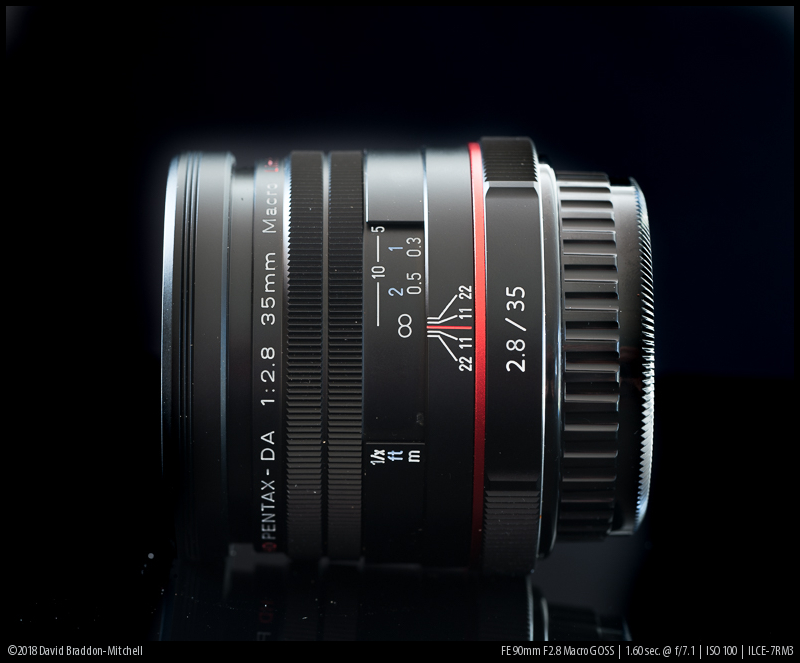
The build quality of the Pentax HD is much higher than the Tokina, if by build quality you mean (as people often seem to) how nice it feels and looks. It’s also considerably smaller and lighter than its Tokina cousin. It has a metal outer shell, that seems very precisely put together, and all-in-all exudes luxury and quality. It even comes with a beautifully made Leica style push on lens cap! Of course whether that translates into better reliability and ruggedness is something that only destructive testing could reveal. This version comes with a built-in lens hood. A nice feature but be careful: pulled all the way out it will cause huge vignetting, as it’s designed for APSC. But you can pull it about half way out and it’s quite useful.
Performance
Bastian’s review of the Tokina version showed it was very sharp and had good colour correction. But there was a fatal flaw: very strong flare if the sun was anywhere near the front lens element. Let me rephrase: disastrous flare. I’m not repeating any of the sharpness or vignetting tests here: see Bastian’s review – the lenses are the same optical design.
But at the time Bastian noted that while the same optical design was used in two Pentax APS lenses, the later of which is the HD Pentax Ltd lens I’m reporting on here, they were alleged to have better coatings. This latest one is supposed to have the best coatings of all. Of course maybe just coatings won’t be enough to fix the flare. You might think the optical design should change too.
But I can report that the HD Pentax version has above average flare performance: which puts it miles ahead of the Tokina version. I couldn’t replicate the bad Tokina flare on the Pentax whatever I did, sun in frame or out of the frame. Here are two images of the sun in the frame, one wide open and one at f11. It looked much the same wherever the sun was in the frame.
These images were of course taken at infinity, and you can see that at infinity, especially stopped down, the lens doesn’t quite cover the FF sensor. This is not a lens to buy as a general purpose 35mm lens; though if you are carrying it for macro, it will serve well for most purposes, even at infinity if you crop just a little.
Adapting the HD Pentax version
One barrier to using the Pentax version on Sony is that these Pentax DA lenses have no aperture ring and rely on camera control, which is obviously not possible on a Sony body. This means we have to rely on an adapter with aperture control. These are often expensive, bad, or both.
But I’m happy to report on a solution there too: the newer K&F concept Pentax to Sony adapter is even more nicely made than their previous ones, and has an aperture control with click stops no less! I measured the click stops and found that they are more useful with this lens than adapter based click stops usually are. Wide open is of course f2.8; one click is f3.5, two is f5.6, and it’s quite accurate 1 stop clicks after that. You can set intermediate positions too. That’s plenty convenient; and accurate enough that it’s (almost) as good as a proper aperture ring on the lens.
Conclusion
If you need or want a moderate wide angle macro lens on full frame, primarily for macro and close use, you should buy this. It’s very sharp across the field (not extremely flat field near the outer areas of FF, but for macro that matters not at all unless you are photographing documents). It has good contrast, and the Pentax version has gone from disastrous flare in the Tokina to superb performance. I’m quite amazed there can be so much improvement without changing the optical layout. Together with the right adapter, it’s an indispensable tool in the macro enthusiasts toolbox (though certainly not the first tool she will acquire!). There aren’t really any direct alternatives other than other APSC macros. You can get a 15mm macro from Laowa, which is massively different, or a 50mm standard macro from everybody. You could try a 40 or 35mm enlarger lens reversed. Or else a regular 35mm lens on tubes, but they often don’t perform that well. A strong achromatic diopter might be better.
So if you want a nicely made well performing wide macro that can be used for other purposes (with excellent results at moderate distances, and good central performance at infinity) then this is all there is. Luckily it’s a fine choice.
You can buy the lens via our affiliate link to eBay or our affiliate links at B&H or via our link to Amazon
It’s worth noting that there are different versions of the K&F adapter still for sale. You want the latest one which is much better. You can get that adapter from eBay here.

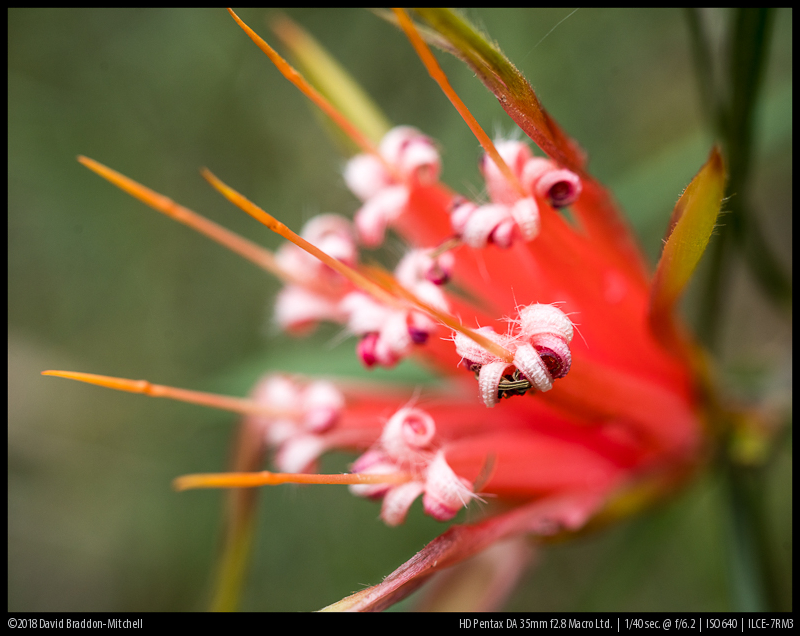

This site contains affiliate links. If you make a purchase using any of the links marked as affiliate links, I may receive a small commission at no additional cost to you. This helps support the creation of future content.
David Braddon-Mitchell
Latest posts by David Braddon-Mitchell (see all)
- Laowa FFii 90mm F2.8 CA-Dreamer Macro 2x: getting close! - August 21, 2022
- FLM Ballheads: a rediscovery - February 4, 2021
- Laowa 14mm f4 Detailed Review - December 31, 2020
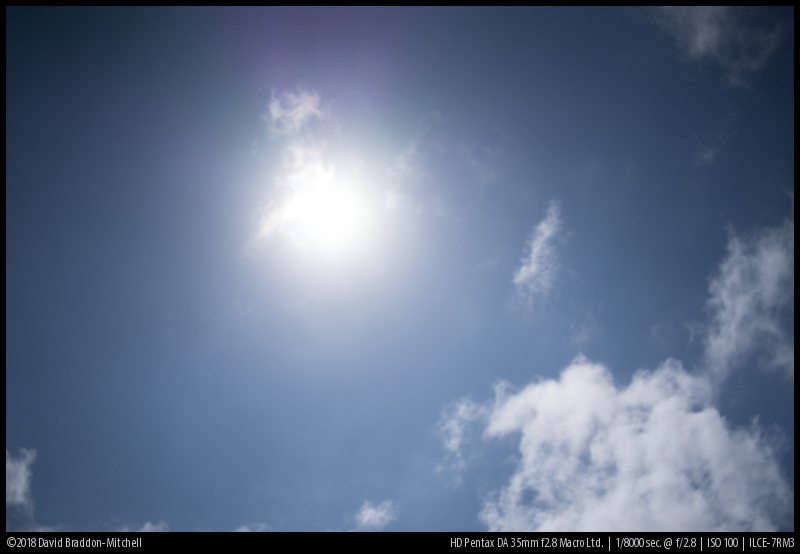
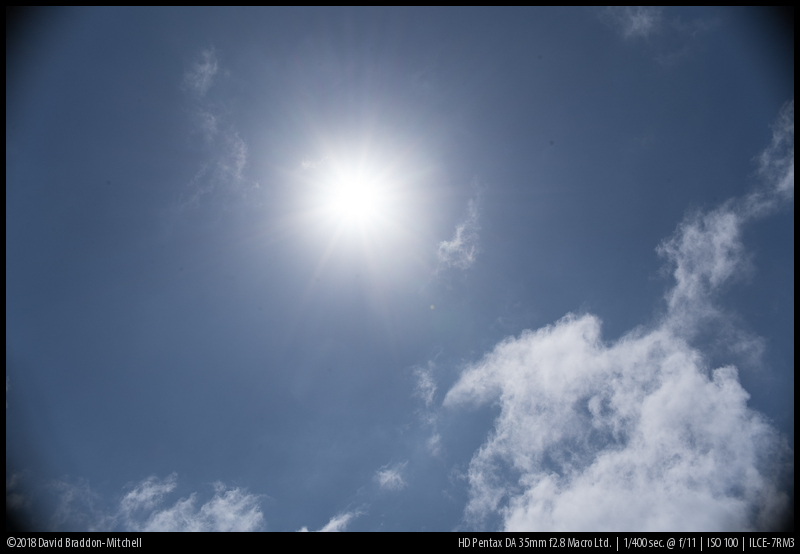

Looks like it covers 35mm sensor quite nicely with some slight vignette in landscape shots. Nice review!
Exactly! While it wouldn’t be my first choice for landscape, when I’m out in the national park looking for botanical macros, and I see a nice landscape image, it’s still possible to get a very good image.
Thank you for the review and confirmation the K&F adapter works properly. I bought the Pentax DA 35/2.4 for my alpha 7. This is also an APS-C lens which works quite good on the full frame Pentax K1.
Did you have any particular reason to choose it rather than a legacy full frame 35m lens? (perhaps it *is* a legacy full frame lens? Some of the DA lenses probably are). Yes the latest KAF is a great choice for Pentax DA! I was very excited by the quality for the money. When there is one of these it’s much harder to justify the Big Two expensive and good adapters…
I was looking for a light, low-cost walkabout lens for my reversed focus kit.
You can find a DA 35/2.4 for 65 euro in mint condition.
Due to some reviews (and your last review) I have great faith in the coatings of Pentax.
This lens will be a little bit of an experiment on an a7, but I think it is worth a try. I expect a better resolution performance than the slower legacy SLR 35mm Pentax lenses.
Wide open the lens will probably suffer from vignetting, but that’s often desirable for me.
The DA 35/2.4’s lens design is similar to his older analog FA 35/2 brother (which is still in production). It does not surprise me if the same glass is used in the 35/2.4. The APS-C version could be mechanically limited to f/2.4 to achieve a better wide open performance.
I agree with you concerning the K&F adapters. They are in my opinion the best bang for the buck.
Yes. That was my hypothesis about the 2.4/35; I had heard that some DA lenses were adaptations of older ff designs. You might be able to tell looking into the lens if the aperture never entirely opens. Though there are other ways of limiting, using matte masks rather than just the blades, that might not be so easy to detect.
There is a matte mask on the back element.
I tested the lens on a Sony a7 and I can say I am quite happy. Yes, there is vignetting wide open, but the resolution and contrast is very good. Stopped down with two clicks the lens is nearly excellent across the frame. The manual focussing experience isn’t that pleasing, but I rarely miss a shot.
After all, the results of this lens are pleasing to my eyes, more than the Sony FE 28.
An option if you want 35mm fairly close focusing is the Contax Zeiss Vario-Sonnar f/3.4 35 – 70mm zoom.
Not really a dedicated macro it still goes down to 1:2.5 making it useful for flowers in many cases. And with the most creamy and beautiful bokeh I’ve seen. And sharp.
Yes I have one of those, and have occasionally used it’s close focus function. But of course it’s only 1:2.5; and on my copy at least you can get OK central sharpness at this setting but not much off axis. Still, it’s a very useful function to have on what is still very useful lens. It’s the only standard zoom I own currently (though I’m tempted by the Tamron 28-75 if really does perform as well as they promise)
A bit late to the party but can you confirm if the lens locks at the 12 o’clock position on the Sony body with this KF adapter? I had a non-DA version of this adapter that locks the lens slightly past 12 o’clock and lenses with built-in hoods/baffles would vignet. (e.g. Rokinon 14)
Mine does. But with cheap adapters variation is very possible, indeed likely.